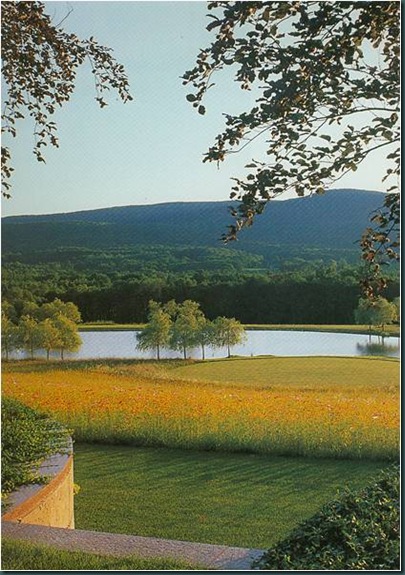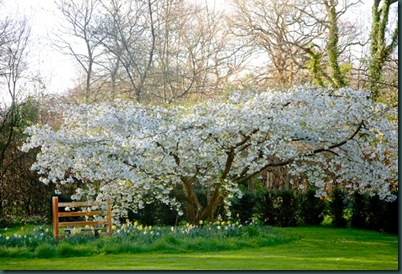
As a working designer, it is easy to take for granted garden elements that designers use on a daily basis, but for the general public and my students at the Oxford College of Garden Design the difference between rough grass and cut crass is a question that crops up year after year.
Grass is probably the cheapest surfacing materials we use in gardens, and just by varying its height it can be considered one of the most useful elements as well.
Cut grass is the same as lawn. It is grass that is kept regularly mown, usually on a weekly basis during the growing season. It is kept free of weeds and bulbs and can vary in use from bowling green to children's play area.
Rough grass is lawn that has been allowed to grow longer and is usually cut just twice a year. It can contain wild flowers for summer interest and bulbs for spring colour, because you do not mow it until July, after the bulbs have died down and the wild flowers have self seeded.
In design terms, it can just be ordinary lawn which is allowed to grow longer, so providing a ground pattern that helps the designer steer the visitor in a desired direction. (people will walk on cut grass but not on rough grass)
You can also use rough grass as a sculptural form, to provide patterns on the ground which are particularly effective, when viewed from above or planted on sloping ground so the design pattern can be appreciated.
 My garden taken this spring
My garden taken this springI regularly use rough grass round trees as a way of protecting the tree from damage by lawn mowers and strimmers and to prevent that nasty piece of tufty grass round the trucks, that would otherwise be left after mowing.
If the designer is starting from scratch, I would recommend using a fine grass seed mixtures that spreads via underground rhizome i.e. Creeping Red Fescue and Brown Top rather than clump forming varieties like dwarf rye grass otherwise any existing lawn can be turned into rough grass areas.
Rough grass can dramatically reduce maintenance and irrigation costs, as it saves on mowing time and is never irrigated.
In warmer climates during the summer the rough grass should be allowed to turn golden brown and if smaller, softer varieties are used, can give the impression of prairie grasslands and look beautiful when blowing in the wind.
At the end of summer a final cut can be given in September/October so the lawn is short enough not to obscure spring bulbs the following season.
